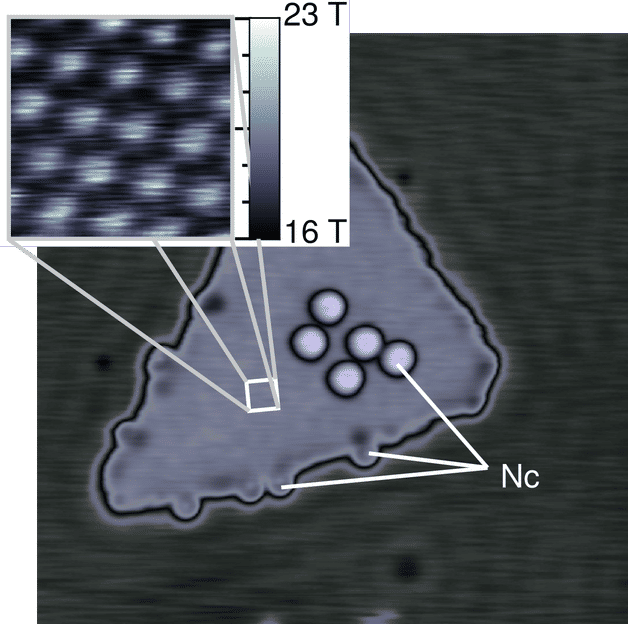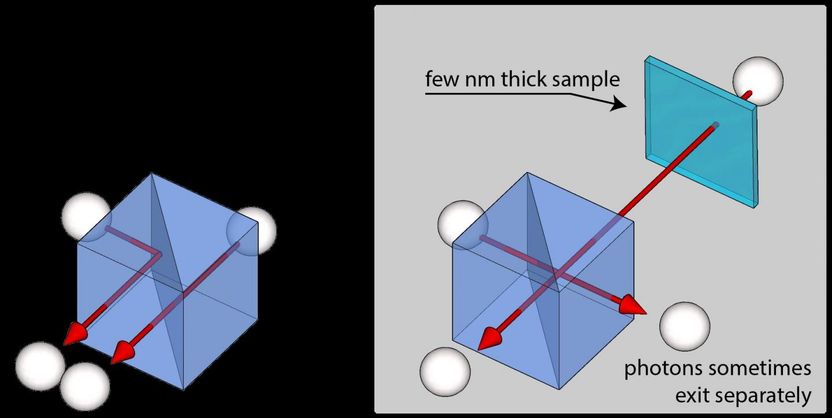Sensing magnetism in atomic resolution with just a scanning tunneling microscope
Researchers use single molecule on microscope tip as a sensor to detect magnetic moments with unprecedented spatial resolution
Scientists from the University of Strasbourg, France, in close collaboration with colleagues from the research centers in San Sebastián, Spain, and Jülich, Germany, have achieved a breakthrough in detecting the magnetic moments of nanoscale structures. They succeeded in making the magnetic moments visible with a resolution down to the atomic level using a scanning tunneling microscope, a device that has been standard in science for many years. The researchers made it sensitive to magnetic properties by placing a small molecule containing a Nickel atom at the microscope tip. The results published in the current issue of Science opens a novel path to achieve fundamental insights into atomic-scale structures and for the designing of future atomic-scale devices like nanoscale storage devices and quantum simulators.

Topographic image of a small island of Cobalt on a Copper surface (size 25 Nanometer times 25 Nanometer). Nc mark the molecules used for functionalising the tip. The tiny square mark the area of a zoom-in which is shown enlarged in the top left corner and which shows the different magnetic interaction field from different Cobalt atoms in the layer.
Copyright: Forschungszentrum Jülich / Markus Ternes
To explore the world of individual atoms and molecules scientists use microscopes which don’t rely on a ray of light or electrons but can rather be seen as the ultimate version of an analogous record-player. These instruments named scanning probe microscopes use the end of a sharp needle as a tip to 'read' the grooves created by atoms and molecules on the supporting surface. To sense the proximity between tip and surface the scientists use a tiny electrical current which starts to flow when both are only separated by a fraction of a nanometer– that is a millions of a millimeter. Regulating the tip to keep this distance enables the topographic imaging by scanning the surface.
While the basic idea of such microscopes have been developed already in the 1980, only during the last decade scientist in different laboratories have learned to expand the capabilities of these microscopes by cleverly designing the very last end of their probing tip. For example, by attaching a small molecule, like CO or hydrogen, an unprecedented increase in spatial resolution was achieved in which the flexibility of the molecule made even chemical bonds visible.
Similarly, the authors of the recent publication in Science also specially crafted the tip apex to bring a novel function to the sharp tip: They made it sensitive to magnetic moments by placing a molecule containing a single Nickel atom, a so-called quantum molecular magnet, at the apex. This molecule can be brought electrically into different magnetic states with ease in a way that it acts like a tiny magnet. While its ground state possesses effectively no magnetic moment, its excited states do have a magnetic moment which senses near-by moments which unprecedented spatial resolution and high sensitivity.
The importance of this achievement is manifold. For the first time, this method makes it possible to image surface structures in combination with their magnetic properties in atomic resolution. The use of a molecule as active sensor makes it very reproducible and easy to implement in instruments used by other groups world-wide working in the field. “Dark” magnetic moments of complex magnetic structures, which are usually difficult to measure, become accessible, which is important for understanding their inner structure. And the method offers another advantage. Because the ground-state of the molecular sensor is non-magnetic, the measurement induces only minimal back-action onto the system under study – important to prevail volatile states at the nanoscale.
In summary, with this work scientists have expanded their nanoscale toolbox with a new tool sensitive to the magnetic properties which will be important for future applications ranging from nanoscale memory-devices to novel materials or applications in the field of quantum simulation and computing.

























































